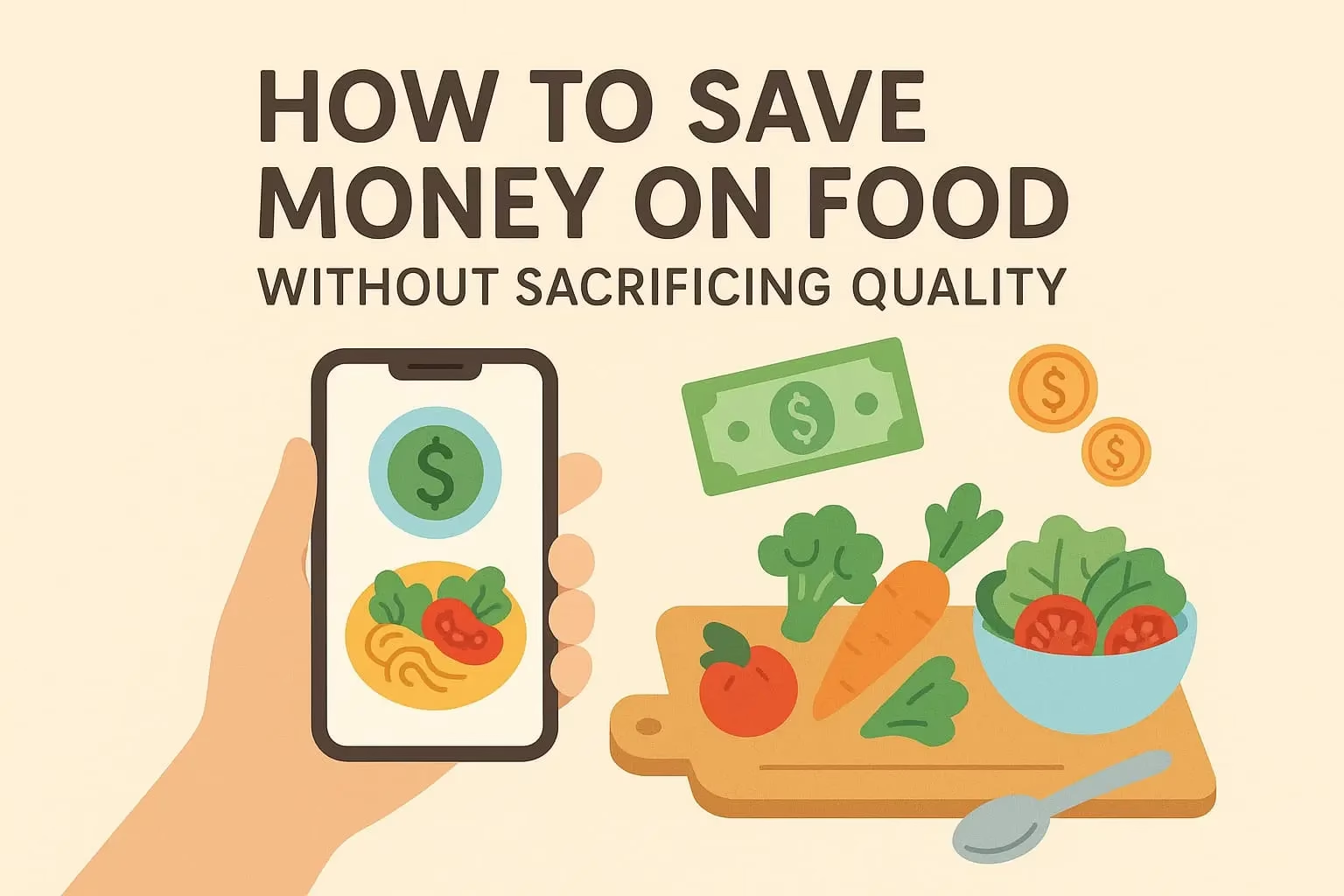Many people believe that eating plant-based is expensive — but that’s far from the truth. In reality, some of the most affordable foods in the world are plant-based, like rice, beans, oats, and seasonal produce.
The key is learning how to shop, plan, and cook smart. In this article, you’ll discover practical tips to eat plant-based on a budget — without sacrificing nutrition or flavor.
Why Plant-Based Eating Can Be Affordable
Whole plant foods are often cheaper than meat, dairy, and processed foods. Plus, they store well and offer excellent nutrition per dollar.
Budget-friendly staples include:
- Beans and lentils
- Whole grains
- Seasonal fruits and vegetables
- Potatoes and sweet potatoes
- Frozen veggies
- Tofu and tempeh
Let’s explore how to make the most of them!
1. Cook at Home More Often
Eating out, even at vegan spots, adds up fast.
Benefits of cooking at home:
- Save money on every meal
- Control your ingredients
- Cook once, eat multiple times
- Reduce food waste
Start by prepping 1–2 simple meals for the week like a big pot of chili, rice and beans, or pasta with veggies.
2. Buy in Bulk
Staple items like grains, legumes, oats, nuts, seeds, and spices are often much cheaper when bought in bulk.
Tips:
- Visit bulk bins at local health food stores
- Shop online for large bags of rice, lentils, or oats
- Store in airtight containers to keep them fresh
- Freeze nuts and seeds to extend shelf life
Over time, this approach can cut grocery bills by 30–50%.
3. Focus on In-Season and Frozen Produce
Fresh fruits and vegetables can get pricey — unless you shop seasonally or buy frozen.
Save more by:
- Buying what’s in season (it’s cheaper and fresher)
- Shopping at local farmers’ markets near closing time (often discounted)
- Using frozen fruits and vegetables — they’re just as nutritious and cost less
- Skipping pre-cut or packaged produce
Bonus: Grow your own herbs or greens if possible — even a windowsill garden helps!
4. Choose Simple, Versatile Ingredients
Stick to a few basic foods you can use in multiple meals.
Example weekly staples:
- Brown rice or quinoa
- Black beans or lentils
- Sweet potatoes or carrots
- Frozen broccoli or spinach
- Oats and bananas
- Peanut butter and flaxseed
You can make stews, bowls, salads, breakfasts, and snacks using the same ingredients in different ways.
5. Limit Packaged Vegan Alternatives
Plant-based meats, cheeses, and specialty snacks can be convenient — but they’re often expensive and highly processed.
Try these swaps:
- Use lentils or mushrooms instead of vegan ground meat
- Make cashew or tahini-based sauces instead of buying vegan cheese
- Bake your own granola bars or energy balls instead of buying snack bars
Save them for special occasions — and stick to whole foods most of the time.
6. Meal Plan and Stick to a Grocery List
Impulse buying is a major reason grocery costs climb.
How to plan:
- Choose 3–4 meals to repeat during the week
- Write a list based only on those recipes
- Avoid shopping when you’re hungry
- Check what you already have at home
Tip: Use a grocery app or keep a notepad in your kitchen to jot down what you run out of.
7. Make Big Batches and Use Leftovers
Cooking in larger quantities reduces costs and saves time.
Make once, eat 2–3 times:
- Lentil soup
- Vegetable curry
- Chili
- Pasta salad
- Stir-fried rice
Freeze portions for future meals or use leftovers to build new dishes (e.g., leftover lentils in wraps or salads).
8. Use Every Part of Your Ingredients
Food waste = money waste.
Tips to reduce waste:
- Save veggie scraps for homemade broth
- Use wilted greens in smoothies or soups
- Repurpose cooked grains into burgers or patties
- Make banana bread with overripe bananas
Every bit counts.
9. Drink More Water (Skip Expensive Drinks)
Skip the bottled smoothies, juices, and plant-based lattes — they add up fast.
Stick to:
- Filtered tap water
- Homemade tea or coffee
- DIY smoothies using frozen fruit
- Homemade oat or almond milk
Drinks are often one of the most overpriced grocery items.
10. Track Your Spending (Even Just for a Week)
You don’t have to budget forever — just get a clear picture.
Track:
- Where your money goes (groceries vs. eating out)
- What foods you use up vs. waste
- What meals are cheapest to make per serving
This helps you prioritize what works — and eliminate what doesn’t.
Sample $30–40 Plant-Based Grocery List
This list can cover meals for 1–2 people for 5–7 days.
| Category | Items |
|---|---|
| Grains | Brown rice, oats, whole wheat pasta |
| Legumes | Lentils, black beans, chickpeas |
| Veggies | Carrots, onions, sweet potatoes, frozen spinach |
| Fruits | Bananas, apples |
| Pantry Basics | Peanut butter, olive oil, canned tomatoes |
| Extras | Garlic, lemon, spices |
Final Thoughts: Healthy Eating Doesn’t Have to Be Expensive
You can eat plant-based, feel great, and stay within budget — all at the same time.
Focus on simple ingredients, smart planning, and cooking at home. Over time, it becomes second nature — and your wallet (and your health) will thank you.






